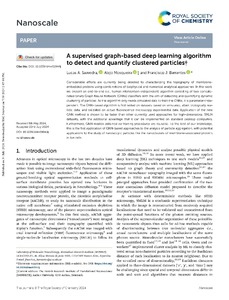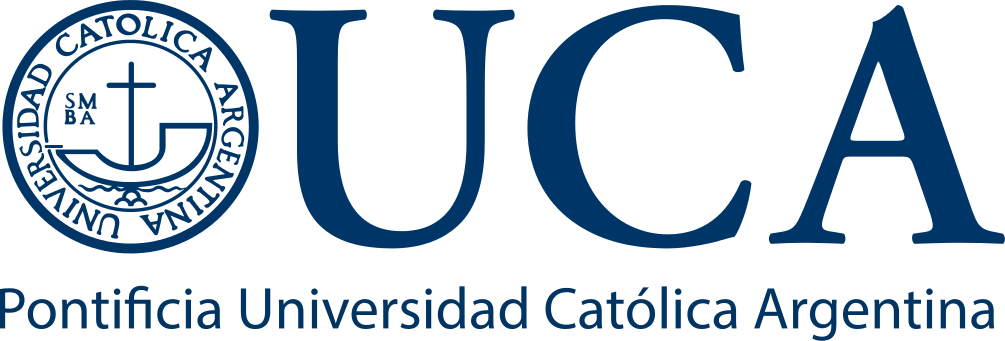Por favor, use este identificador para citar o enlazar este ítem:
https://repositorio.uca.edu.ar/handle/123456789/20070| Campo DC | Valor | Lengua/Idioma |
|---|---|---|
| dc.contributor.author | Saavedra, Lucas A. | es |
| dc.contributor.author | Mosqueira, Alejo | es |
| dc.contributor.author | Barrantes, Francisco J. | es |
| dc.date.accessioned | 2025-07-10T15:14:22Z | - |
| dc.date.available | 2025-07-10T15:14:22Z | - |
| dc.date.issued | 2024 | - |
| dc.identifier.issn | 2040-3372 | - |
| dc.identifier.uri | https://repositorio.uca.edu.ar/handle/123456789/20070 | - |
| dc.description.abstract | Considerable efforts are currently being devoted to characterizing the topography of membraneembedded proteins using combinations of biophysical and numerical analytical approaches. In this work, we present an end-to-end (i.e., human intervention-independent) algorithm consisting of two concatenated binary Graph Neural Network (GNNs) classifiers with the aim of detecting and quantifying dynamic clustering of particles. As the algorithm only needs simulated data to train the GNNs, it is parameter-independent. The GNN-based algorithm is first tested on datasets based on simulated, albeit biologically realistic data, and validated on actual fluorescence microscopy experimental data. Application of the new GNN method is shown to be faster than other currently used approaches for high-dimensional SMLM datasets, with the additional advantage that it can be implemented on standard desktop computers. Furthermore, GNN models obtained via training procedures are reusable. To the best of our knowledge, this is the first application of GNN-based approaches to the analysis of particle aggregation, with potential applications to the study of nanoscopic particles like the nanoclusters of membrane-associated proteins in live cells. | es |
| dc.format | application/pdf | es |
| dc.language.iso | eng | es |
| dc.publisher | Royal Society of Chemistry | es |
| dc.rights | Atribución-NoComercial-CompartirIgual 4.0 Internacional | * |
| dc.rights.uri | http://creativecommons.org/licenses/by-nc-sa/4.0/ | * |
| dc.source | Nanoscale. 32, 2024. | es |
| dc.subject | MEMBRANAS CELULARES | es |
| dc.subject | TOPOGRAFIA | es |
| dc.subject | PROTEINAS | es |
| dc.subject | APRENDIZAJE PROFUNDO | es |
| dc.subject | ALGORITMOS | es |
| dc.title | A supervised graph-based deep learning algorithm to detect and quantify clustered particles | es |
| dc.type | Artículo | es |
| dc.identifier.doi | 10.1039/d4nr01944j | - |
| uca.issnrd | 0 | es |
| uca.affiliation | Fil: Saavedra, Lucas A. Pontificia Universidad Católica Argentina. Facultad de Ciencias Médicas; Argentina | es |
| uca.affiliation | Fil: Mosqueira, Alejo. Pontificia Universidad Católica Argentina. Facultad de Ciencias Médicas; Argentina | es |
| uca.affiliation | Fil: Barrantes, Francisco J. Pontificia Universidad Católica Argentina. Facultad de Ciencias Médicas; Argentina | es |
| uca.version | publishedVersion | es |
| item.fulltext | With Fulltext | - |
| item.grantfulltext | mixedopen | - |
| item.languageiso639-1 | en | - |
| crisitem.author.dept | Instituto de Investigaciones Biomédicas - BIOMED | - |
| crisitem.author.dept | Laboratorio de Neurobiología Molecular | - |
| crisitem.author.dept | Facultad de Ciencias Médicas | - |
| crisitem.author.dept | Instituto de Investigaciones Biomédicas - BIOMED | - |
| crisitem.author.dept | Laboratorio de Neurobiología Molecular | - |
| crisitem.author.dept | Facultad de Ciencias Médicas | - |
| crisitem.author.orcid | 0000-0002-5693-5302 | - |
| crisitem.author.orcid | 0000-0002-4745-681X | - |
| crisitem.author.parentorg | Facultad de Ciencias Médicas | - |
| crisitem.author.parentorg | Instituto de Investigaciones Biomédicas - BIOMED | - |
| crisitem.author.parentorg | Pontificia Universidad Católica Argentina | - |
| crisitem.author.parentorg | Facultad de Ciencias Médicas | - |
| crisitem.author.parentorg | Instituto de Investigaciones Biomédicas - BIOMED | - |
| crisitem.author.parentorg | Pontificia Universidad Católica Argentina | - |
| Aparece en las colecciones: | Artículos | |
Ficheros en este ítem:
| Fichero | Descripción | Tamaño | Formato | Login |
|---|---|---|---|---|
| supervised-graph-based.pdf | 2,46 MB | Adobe PDF | SOLICITAR ACCESO | |
| supervised-graph-based.jpg | 906,16 kB | JPEG |  Visualizar/Abrir |
Este ítem está sujeto a una Licencia Creative Commons

